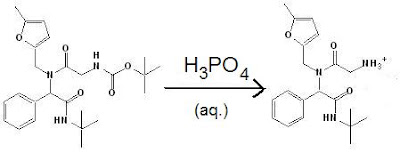The Problem With Black Box Scientific Collaborations
Collaboration is a requirement for the advancement of modern science. Researchers cannot be expert at everything and must specialize to make a unique contribution.
But if coordinating research within a group is challenging, effective collaboration between groups is even more so.
There is often a strong temptation for research units to treat each other like black boxes. There is some logic to this - the point of having a collaborator is to distribute the responsibility of tasks in a project. If I get involved with every detail of my collaborator's work I may as well do the work within my own group.
But problems can arise because of unstated assumptions between groups. A good example is a recent collaboration with groups testing for biological activity. We synthesized compounds and shipped them out for various tests (anti-tumor and malarial inhibition). The researchers performing the assays may have assumed that we had verified aqueous solubility and we didn't think of it since we were not familiar with their protocols.
In all of those cases, the compounds were taken up in DMSO then diluted into an aqueous medium (anti-tumor, falcipain-2 EXP165, Plasmodium EXP166). I would guess that the solubility of most of these compounds in water is very limited, in which case the activity would be under-reported, with most of the product precipitating on the walls of the reaction vessel, floating on the surface or clumped up in suspension.
Now that we know this we can make a point of measuring the aqueous solubility in our lab to make sure that the intended concentrations can be achieved during testing.
It is quite possible that some collaborators will perform such a solubility test as a standard part of their complete protocol. But there is no way to know that without groups interacting at a detailed level.
Lots of discussion is one way to get there. Using Open Notebook Science can be another convenient way of avoiding erroneous assumptions in a collaboration. Not everything needs to be read but it can be accessed if there are doubts from any of the parties.
As I mentioned previously, we can make sure our compounds are water soluble by including an amine. Primary amines are problematic since they participate in the Ugi reaction and we have had problems with tertiary amines.
Including boc-protected amino acids as the carboxylic acid component has a few advantages. First we know that we can make and isolate them successfully. Second, these are readily available commercially since they are building blocks for polypeptides.
Seeking to keep with simplicity and speed maybe we can just shake up the boc-protected Ugi product powders with 85% phosphoric acid until dissolved then dilute up with a near neutral phosphate buffer and ship out those solutions for testing directly. Phosphoric acid has been reported to cleave boc groups in a few hours at room temperature. Phosphate buffer should be compatible with most of the biological assays.
For example (from EXP097):





Comments